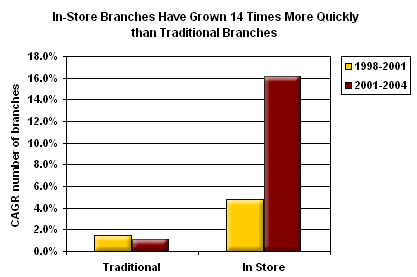What's in Store for In-Store? In-Store Banking and Its Role in the Branch Network
Abstract
San Francisco, CA, USA October 12, 2005 What's in Store for In-Store?Growth of US in-store branches is outpacing the growth of traditional bank branches, at a rate of 16.2% versus 1.1%, respectively. Why are in-store branches growing so much more quickly than traditional brick and mortar branches? In a new report, "What痴 in Store for In-Store?," Celent examines the growth of in-store branches, compares in-store branches to traditional bank branches, provides management best practices, and predicts the evolution of this new breed of branch. An in-store branch boom is underway, with growth rates 14 times that of traditional branches. "With startup costs of only 10% to 20% of a traditional branch, it痴 hard not to look at these types of branches as an engine for growth," says Bart Narter, author of the report and senior analyst in the banking group at Celent. And in-store branches draw more than 30 times more prospects than traditional branches in a given week because of all the traffic generated by the host retailer.  But the supply of retail locations is thinning, so growth will not be as dramatic as in the past. Banks will need to adapt to shrinking spaces in older stores as spaces in new stores are filled with in-store branches. Banks like US Bank and Boeing Employee Credit Union (BECU) are adapting to these new constraints. Meanwhile a new player, Wal-Mart, is already testing banks. The retailer has filed an application for an industrial bank in Utah and will move into retail financial services as soon as regulators permit. This report profiles a number of banks that have large in-store branch networks including Wells Fargo, Bank of America, US Bank, TCF, SunTrust, First National Bank Texas, and Woodforest. US Bank, Woodforest, and First National Bank Texas are all growing their in-store branches at double-digit rates. Celent also examines the "cashless branch" as implemented by CIBC/Amicus and BECU, taking technology and space utilization to the next level. |
of Celent's Retail Banking research service can download the report electronically by clicking on the icon to the left. Non-members should contact info@celent.com for more information. |
|

